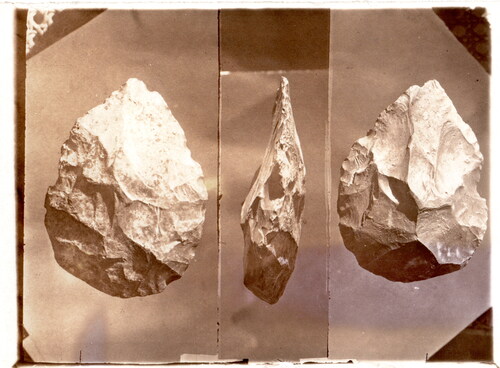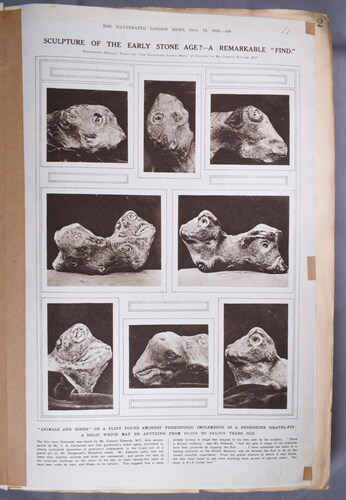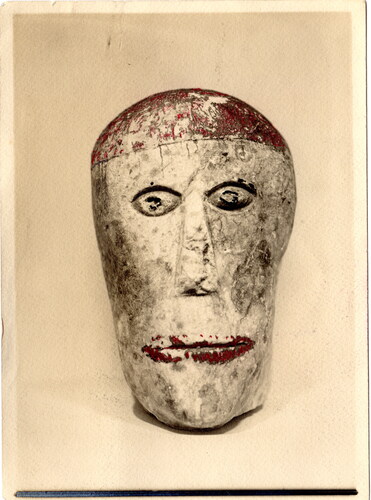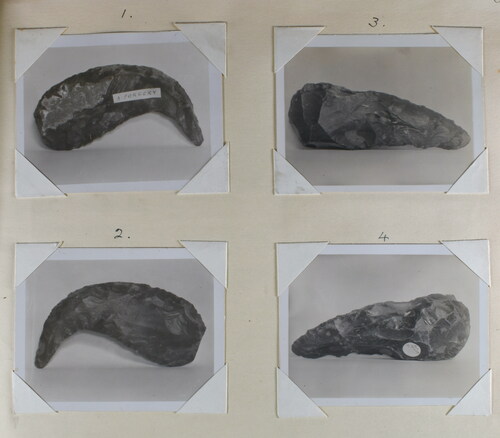Figures & data
Figure 1. Thomas Arthur Bennett, Photographs of a palaeolith arranged as in an archaeological drawing, c.1923, The prints have been cut, spliced and rephotographed at reduced scale, they are indented where a pencil has traced the outline of the flint (Bowes scrapbook 1 p.123, digital scan by Pete Knowles, HBHRS archive).

Figure 2. Newspaper cutting from Illustrated London News, September 18th, 1920, Bowes scrapbook 1, p4a, HBHRS archive, digital photograph by Pete Knowles. See also the pareidolic photograph of “the first-known sculpture of the human face” on the front cover of ILN Nov 7th 1925.

Figure 3. Thomas Arthur Bennett, Hand-colored print of painted stone head thought by Bowes to be of Roman date, 1928, (Bowes scrapbook 1, p195, HBHRS archive, digital scan by Pete Knowles).

Figure 4. Bowes’ scrapbook 3 containing Thomas Arthur Bennett’s photographs of the Cissbury Stone, letters from Reginald Smith and Henri Brieul and envelopes containing X-rays, letters, and more Bennett photographs, 1932 (Bowes scrapbook 3, p70–1, HBHRS archive, digital photograph by Pete Knowles).



